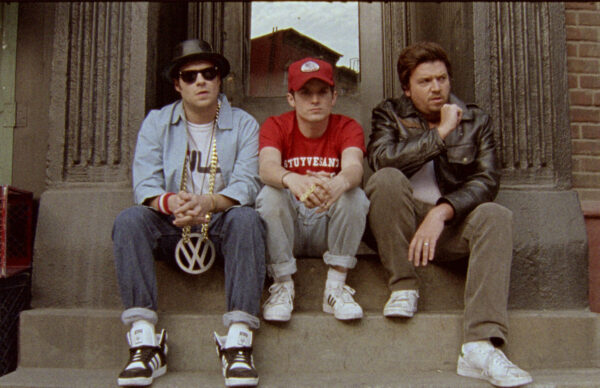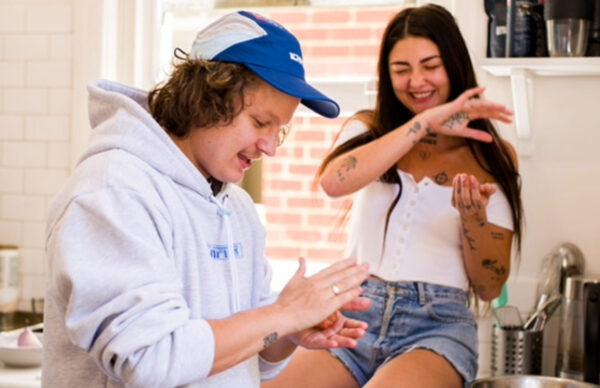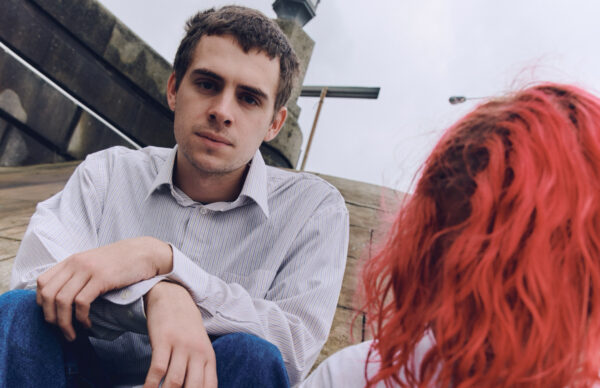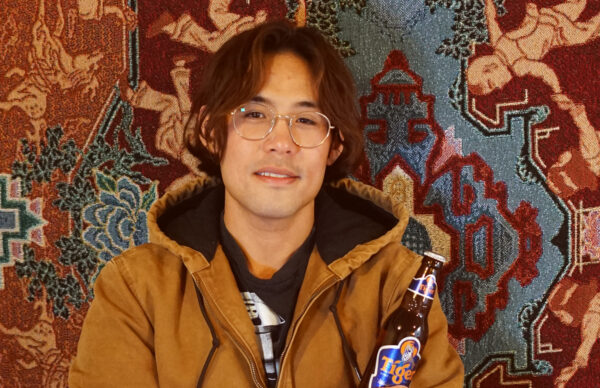Australia can be seen as the street art capital of the Southern hemisphere. There I said it.
With a plethora of street artists making names for themselves in the alleyways of Melbourne and the streets of Sydney’s inner west, there seems to be no shortage of artists who know their way around a spray can and cherry pickers. However, few artists have meant more to the Australian street art scene than Mongolian-born artist Khürelbaataryn Khosnaran aka Heesco.
Moving to Australia more than twenty years ago, Heesco has since built a body of work that captures his ever-evolving mindscape. His work sits comfortably between the worlds of cartoons and stark realism – think Mongolian archers drawing arrows across pastel blue skies to overlord Trump adorned with a menacing set of devil horns. In more recent years, Heesco has begun to reconnect artistically with his homeland of Mongolia, establishing several philanthropic art projects that look to highlight the art community and local issues.
We caught up with man himself to talk about his beginnings, views on art, and what it means to be a Mongolian artist.
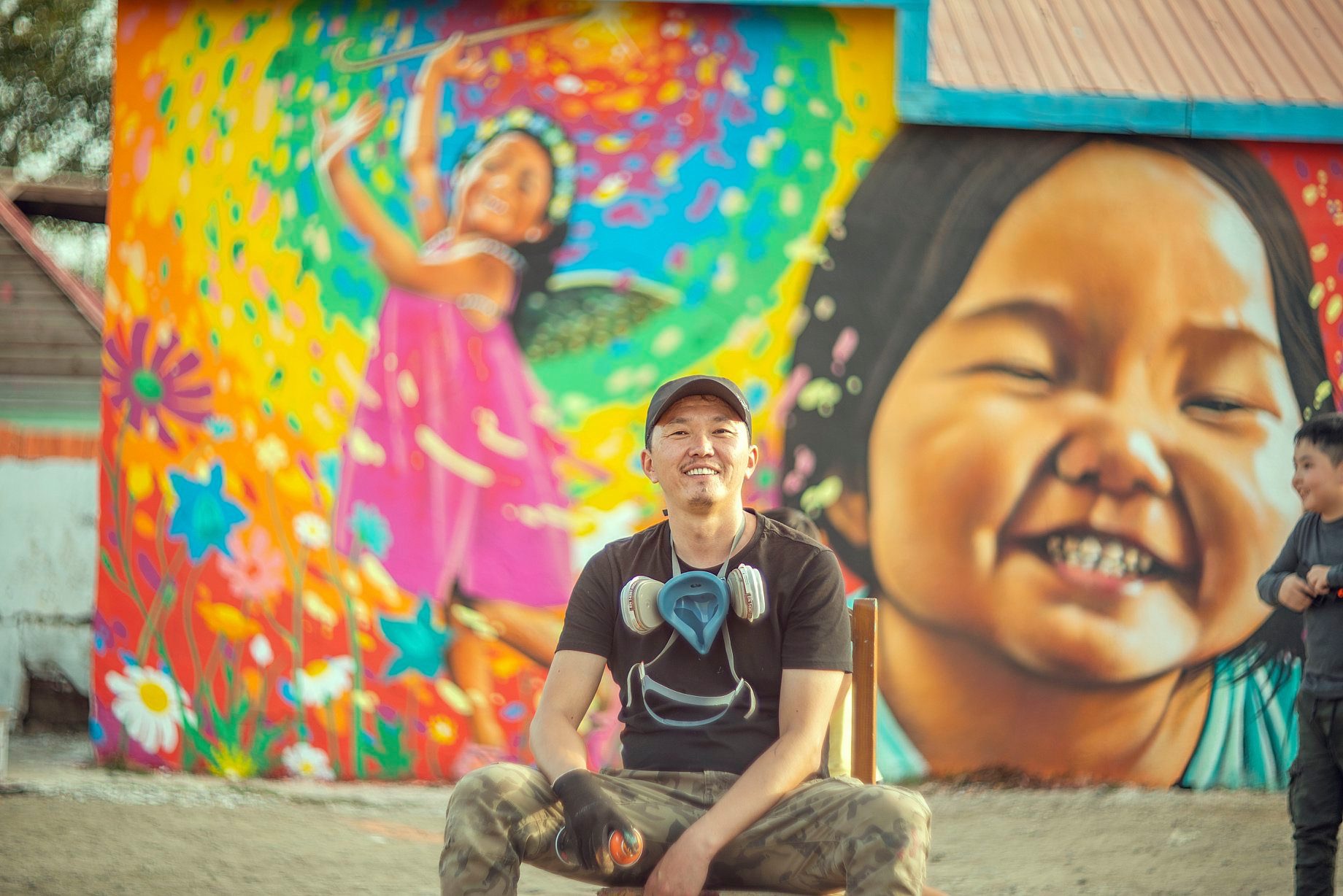
Before moving to Australia at the age of 20, you were born and raised in Ulaanbaatar, Mongolia. What are some of your earliest memories from your youth in Mongolia that still resonate with you as an artist today? What motivated you to move to Australia to study art?
I grew up in the 1980’s, during the communist era in Mongolia – imagine North Korea and you’ll get a pretty close image of what life used to be like for us back then. Everything was state controlled, a society completely sedated on communist doctrine. I grew up surrounded by big propaganda billboards and murals, pictures in books were all done in the style of socialist realism, depicting workers and soldiers and nurses etc. My father was an artist and architect, so my earliest memories were of him painting portraits of politicians or portraits of recently deceased people for their families – his side hustle. I used to draw a lot as a kid and remember my dad teaching me the basic human anatomy and proportions, which really stuck with me. Although, my parents were fairly supportive of my creativity, growing up seeing my father’s and his friends’ struggles actually put me off art initially, because, I saw how frustrated and depressed they were about their lives, and they all drank heavy loads of vodka to cope with it. So, it wasn’t anything that exciting to be an artist in Mongolia during that time, really.
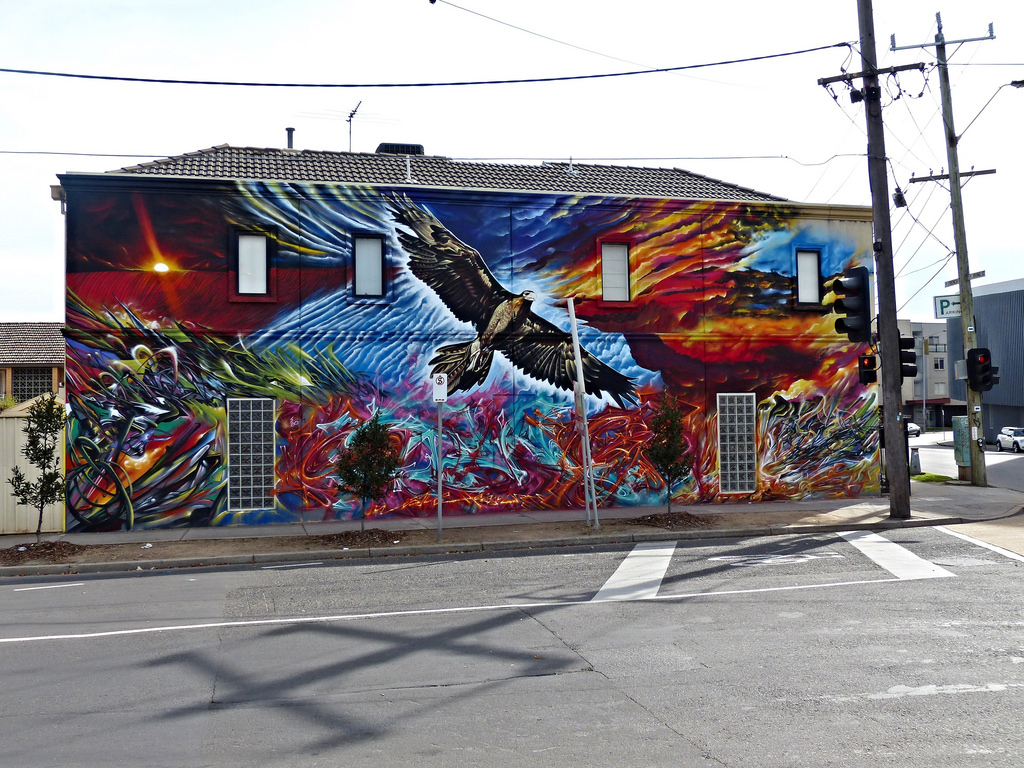
In 1990 Mongolia overthrew the communist government and became a democracy. This opened up a lot of doors in terms of arts and culture, like cable TV and western magazines. There was a huge Asian and western pop culture explosion in Mongolia in the early nineties. But this period also brought economic hardship from which Mongolia is still struggling to recover to this day.
And then in 1993 my mother decided to travel to Poland to open a traditional Eastern medicine clinic in Krakow with a business partner, and decided to take me with her. I was 13, and once we got there, I got sent to a regular suburban school, where I was the only foreigner, and first Asian student they ever had. I got picked on a bit initially, but learned to stand my ground quickly, and having grown up speaking Russian, Polish language wasn’t hard to pick up, and after a couple of months I was yelling abuses back, haha. I used to just sit and draw during recesses, since I didn’t know any one, and I remember these 2 metal-head kids coming up to me and asking if I could draw them something like Iron Maiden’s Eddie, or a Meatloaf album cover, which I did and quickly made friends with them. Then 2 other kids started asked me to draw them some superheroes. So I quickly realised I could get my hustle on, and started drawing stuff for these kids and in return borrow heavy metal cassettes and comic books, because I couldn’t really afford to buy any of those myself. That experience really got me into heavy metal and comic books, and it still resonates with a lot of my art today. In some ways, I’m still that excited 13 year old kid inside, always happy to put on some metal and draw some badass superheroes.
After I got back to Mongolia a year later, I’m pretty sure I had already realised I wanted to become an artist when I grow up, because Poland had opened up my eyes to the rest of the world, with all its possibilities. Whereas Mongolia during that time had plunged even deeper into economic crisis, and it was pretty much a hell hole, especially for a sensitive teenager. It was pretty rough few years before I graduated from high school and could make plans to get out of there. I didn’t really have a preference where to except it had to be somewhere English speaking, as I could see English language was becoming the world language. Tuition fees in Australia back then were much more affordable, so I decided that was that. My parents had to sell our apartment to pay for my tuition fee, and I packed my bags and jumped on a plane to Sydney.
Your work strikingly renders together photo realistic subjects, stark shadows, and a surrealistic colour palette, to create works of a searing intensity. What inspired your bold artistic aesthetics?
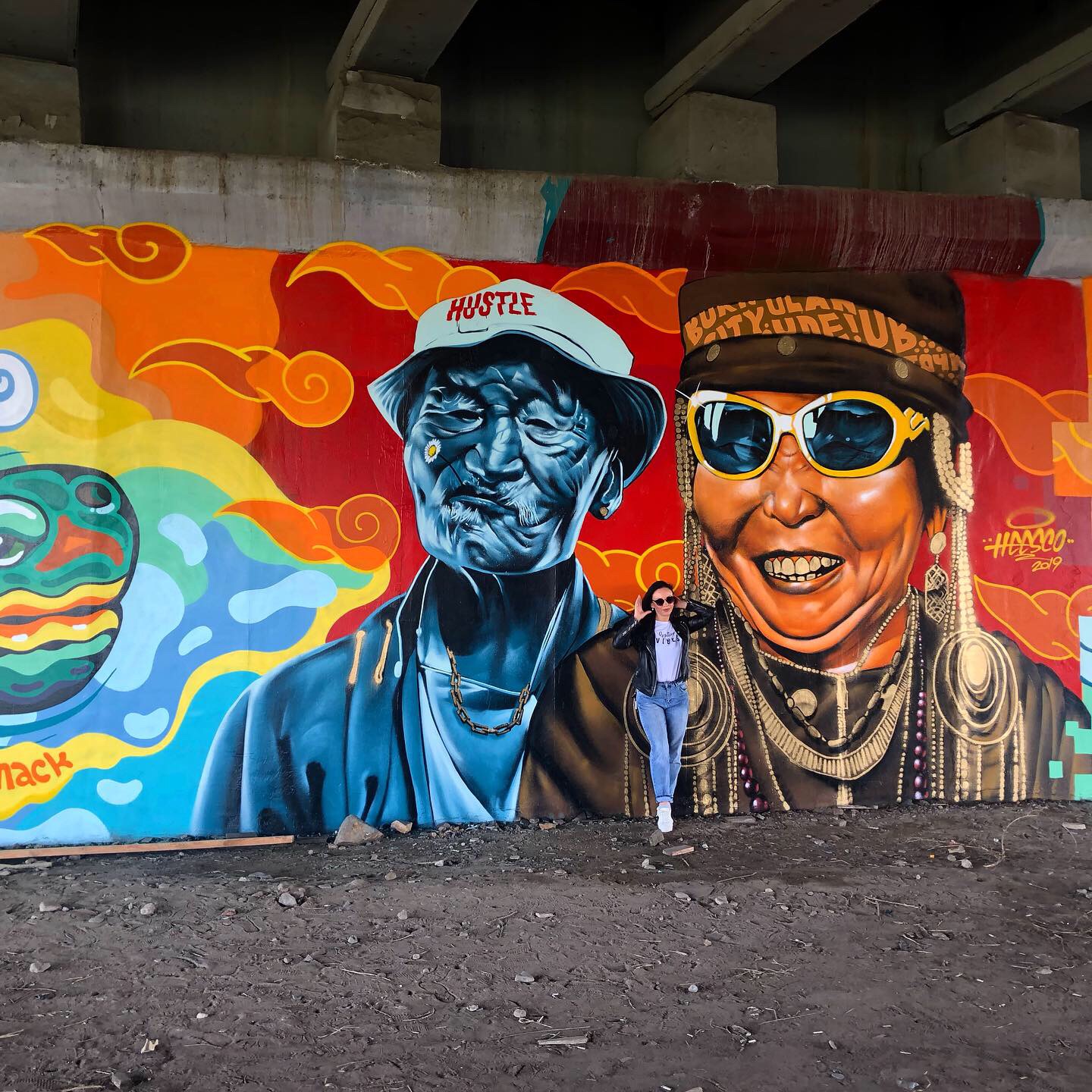
The crazy colours definitely came from comic books, cartoons and anime, as well as punk and metal artworks and graffiti. But most of my early life I only drew in black and white. I really wanted to become a comic book artist, and after drawing hundreds of muscly dudes, you realise it’s not only about the main character, but creating a scene, drawing backgrounds – buildings, vehicles, nature, environments, so I set out learning to draw pretty much anything and everything. I spent a long time sketching mostly in pencils, and learned a lot about light and shadow and how to render things in correct angle and proportions. During that time I got super obsessed with crosshatching, and eventually gave myself RSI drawing like that. I literally couldn’t even brush my teeth, let alone keep drawing like that, because of the pain, and had to get extensive physiotherapy and wear a strap on my forearm for nearly a year. This injury made me switch styles and learn to paint with brushes and use colours, and work on bigger scale too. And when I eventually got my head around the colour theory, everything just blew up, all of a sudden I wanted everything to be as bright and colourful and contrast-y as possible.
Why did you eventually decide to focus working primarily in murals and street art?
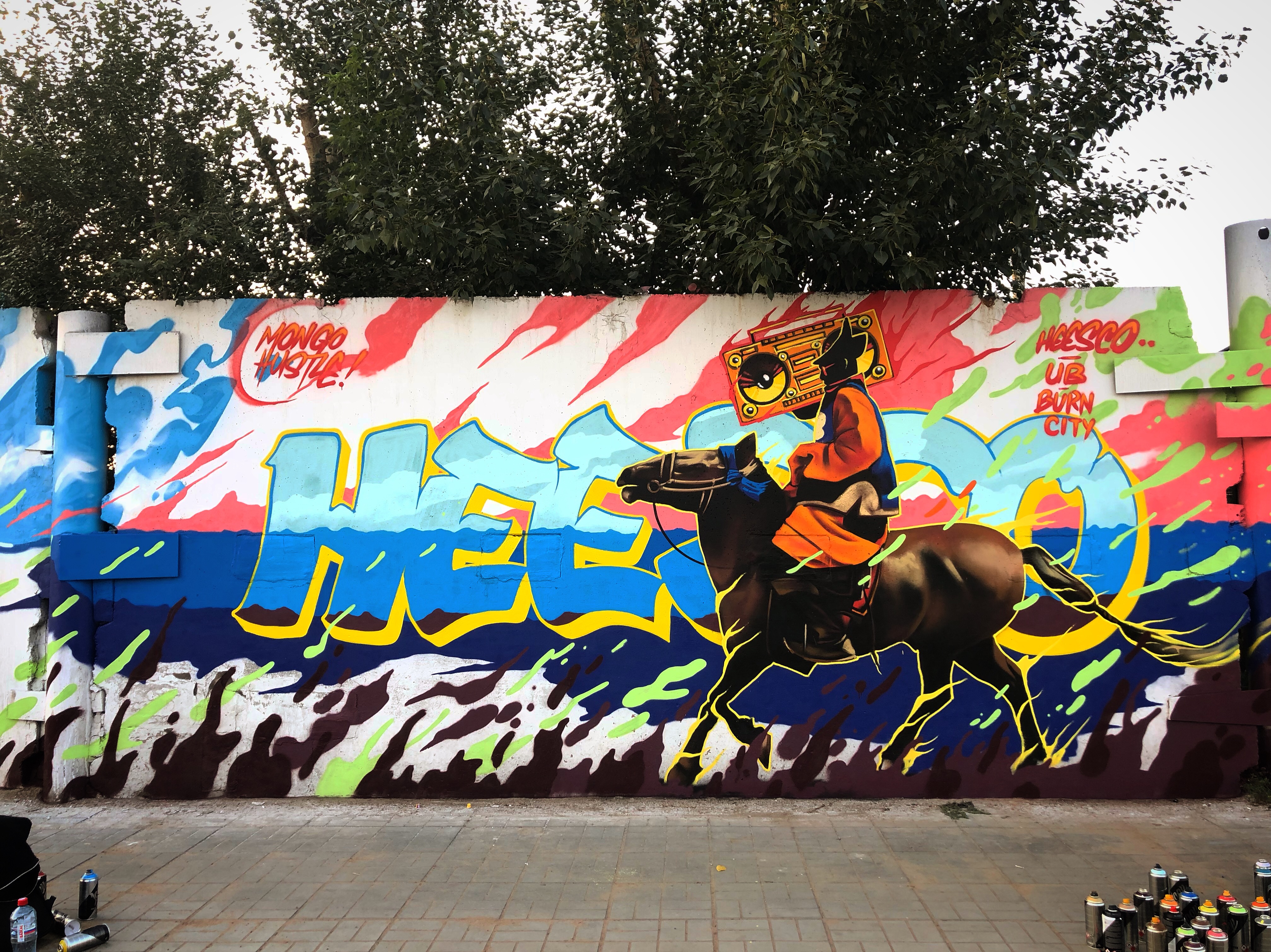
I never thought I’d become a street art dude, but maybe it has something to do with all of them propaganda murals I grew up looking at in Mongolia? When I enrolled to SCA in Sydney I wanted to get educated on western art history and theory, but I honestly didn’t realise just how much behind and backwards my art education has been till then. I was studying highly conceptual art, art history and theories, and really struggled to keep up with the rest of the students who grew up learning at least the basics of Western Modern art in their high schools and whatnot, and I didn’t have a clue about anything, I was definitely out of my depth. I did manage to complete the Bachelors degree with somewhat decent marks, although I walked away more confused and uncertain as to what kind of an artist I wanted to be, and I spent a fair few years after graduating just working and trying to figure out my life, my art and career in general, which, I guess, is pretty normal for any art school graduates.
Around that time Street Art was making a buzz, and I started noticing local guys like Lister, Ben Frost, and Meggs who were doing cool paintings based on pop culture, and comic books, and I was instantly drawn to that scene, and pretty much ditched my conceptual art aspirations, and just started drawing and painting what I wanted to. It was quite liberating, and inspiring, to be able to create art without overthinking and over-analysing everything. I did a couple of solo shows in Sydney, but my art wasn’t really going anywhere. To be honest, Sydney scene can be pretty cliquey and insular for someone starting out, so I made the move to Melbourne in 2010 with my wife, to start over.
Once in Melbourne, I met many street artists like Mike Makatron, who took me out painting, and put me on a wall production alongside some of the most known artists in Melbourne like Adnate, Twoone, Drewfunk, Civil, Itch, Bailer etc. And soon after, I got a space at Blender studios, and that opened up a lot of opportunities to meet other artists, and paint walls pretty much non-stop ever since.
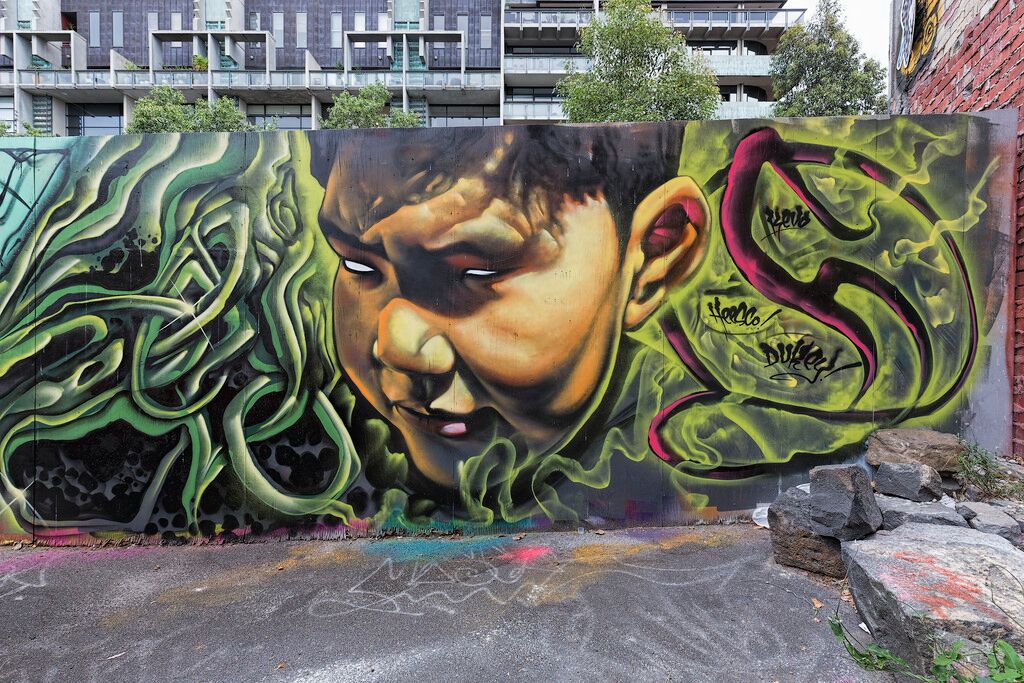
Painting walls was a different game but very much right up my alley. It enabled me to practice and express myself, and probably find my true self. I quickly fell into the dynamic of painting and working this way, and it felt very natural, I was in my element, it felt like I finally found my thing. I love the rush of painting big and quick, the pressure to not make mistakes as walls are always in a public space. I also find graffiti and murals allowed me to be experimental and explore my potentials and develop my skills beyond what I thought I was capable of.
And perhaps I also love it because it’s an art form for the “common people”? There’s no snobby elitism of gallery art, no art critics and curators who decide what’s good and what’s not. The general public itself is the judge and jury of what’s good or not, and what’s stays and what doesn’t. I love the ephemeral nature of graffiti and street art, it has its own natural selection process, rules, and code of honour. It’s a very direct and honest form of art, it engages its audience straight on, without any middle-men to tell you what it is, and what it is not. The general public can be ruthlessly critical and punishing, but can also be overwhelmingly supportive too. Painting on the streets taught me to be disciplined, to manage myself and be organised and be prepared at all times, to stay sharp and focused and paint pretty much under constant pressure. It can require you to take risks and to think on your feet at all times, and to improvise when have to, and often get creative on demand, which is always hard but fun. The rewards are quite fast and direct too, but so are the failures, so in many ways it made me take control of my own career, and grow as an artist, and as a man.

Whether it be murals of a demon Trump, an homage to the Olympic Black Power Salute or a beautiful piece for Breathe Mongolia, you have always been able to infuse political consciousness into your work. Why is this important to you as an artist?
Well, as an artist, I think it is important to make observations and make comments and give feedback to what’s happening around us, be it social, political, environmental or any other issues. I don’t do any of this for personal gain or popularity, I do it because I felt it was the right thing to do at that particular time. Every artist has their own platform to exercise their creative freedom and to express ideas and opinions without restrictions. That’s what I learned in art school, and from doing graffiti. I became an artist to be able to exercise this very freedom in the first place. And it would be a shame not to exercise this fine privilege we are granted in a country like Australia, because we are capable of exposing truths – however uncomfortable they might be, so that we can all address it, discuss it, and hopefully change it for better. I think for any individuals, it’s super important to not be apathetic towards political issues, and get involved and support what’s important for us, and help shape our future, and our kids futures. At some point I realised it is far better to be positive than negative. It’s easy to criticise what’s wrong in the society, but much harder to try and fix that wrong. So I chose to be involved more in humanitarian and social work, and do community projects and try and be a positive change in the society, however small they might be.
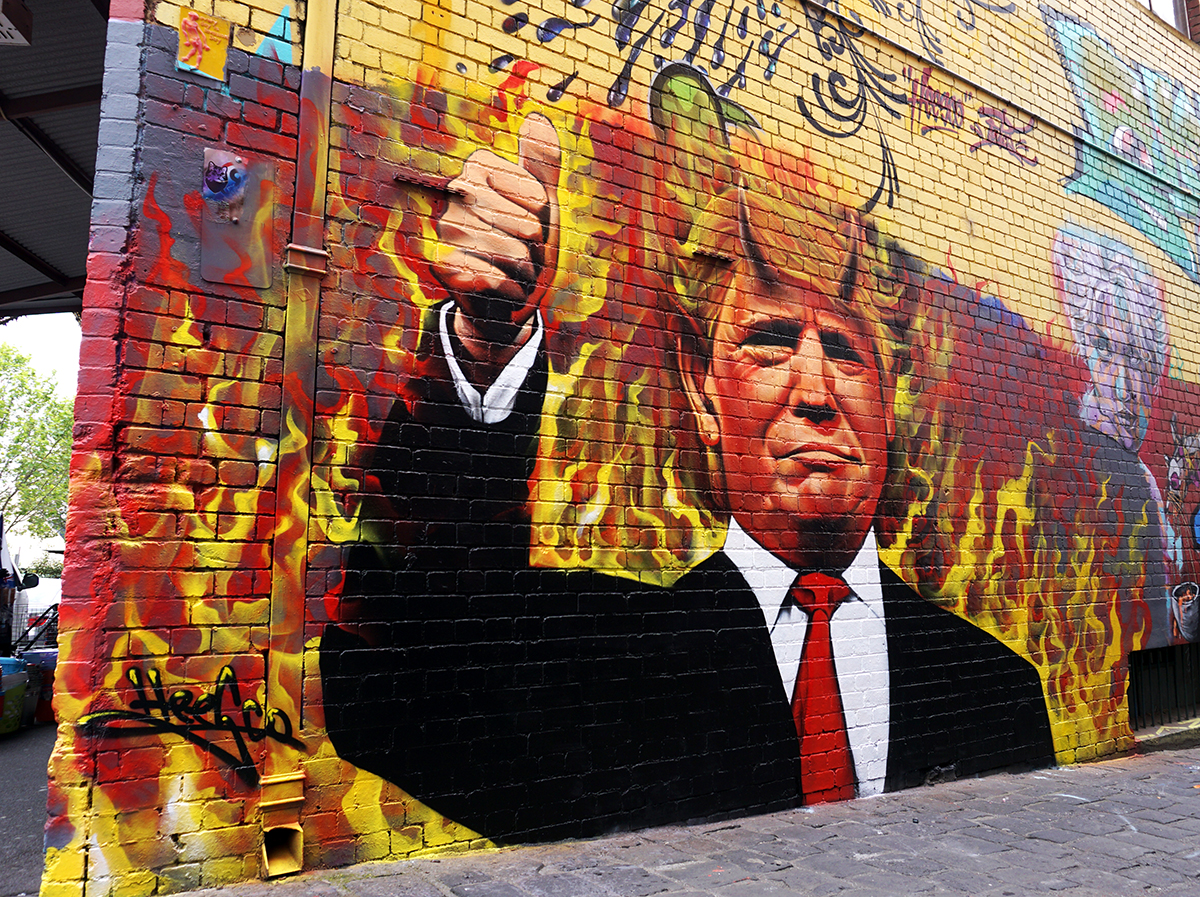
You have been labelled in the past as one of the faces of the emerging Mongolian art scene. What does it mean to you to represent your home country abroad?
Oh it’s a huge honour! But the simple fact is that there is no other Mongolian doing what I’m doing, so I guess I became a representative of my culture by default, haha.
“Homeland” a short documentary by Kevin Flores: Homeland follows renowned Melbournian street artist, Heesco, as he travels through Mongolia and reconnects with his roots after living in Australia for 20 years.
Over the years I’ve been so many people’s “first Mongolian” they met, it really made me think about the importance of properly representing my culture and educating people, so inadvertently I started researching and studying Mongolian history and cultural traditions etc, just so I can give people the right information regarding Mongolia. This in turn started to spill into my art, and I started painting more murals with Mongolian themes.
 Mongolian culture itself is so rich and dense that it provides pretty much endless inspiration and visual references for paintings. In the future I’m planning to travel widely and specifically paint Mongolian themed murals, but not just simply paint Mongolian images, but paint works that reflect and educate the audiences about current issues in Mongolia, like air pollution, human trafficking, and children’s safety etc. I’m quite involved with a number of Mongolian NGOs who do work in these areas and I’m always trying to support them any way I can. If I’m meant to be a some sort of “cultural ambassador” then might as well do it for the benefit of the underprivileged children and the poor folk who are struggling there every day.
Mongolian culture itself is so rich and dense that it provides pretty much endless inspiration and visual references for paintings. In the future I’m planning to travel widely and specifically paint Mongolian themed murals, but not just simply paint Mongolian images, but paint works that reflect and educate the audiences about current issues in Mongolia, like air pollution, human trafficking, and children’s safety etc. I’m quite involved with a number of Mongolian NGOs who do work in these areas and I’m always trying to support them any way I can. If I’m meant to be a some sort of “cultural ambassador” then might as well do it for the benefit of the underprivileged children and the poor folk who are struggling there every day.
Do you have any advice to up and coming artist possibly reading this interview?
I think young artists tend to overthink their art practice and career a bit. I’ve been there myself, overthinking can seriously paralyse and kill creativity. Took me a long time to figure out what kind of an artist I want to be, and honestly i’m still figuring it out as we speak, because it should be and meant to be an endless quest anyway. When you treat your art practice with respect it deserves, and treat it as a profession, and practice it every single day, eventually, through this constant art making process you learn more and more about yourself and your practice, and gradually things get resolved, and you start seeing much clearer what works and what doesn’t work, and this leads to better understanding not only yourself as an artist, but will guide and steer your career towards things you really want to be doing. So in other words, be prolific, and just aim to create the best art you can, and the rest usually follows.
